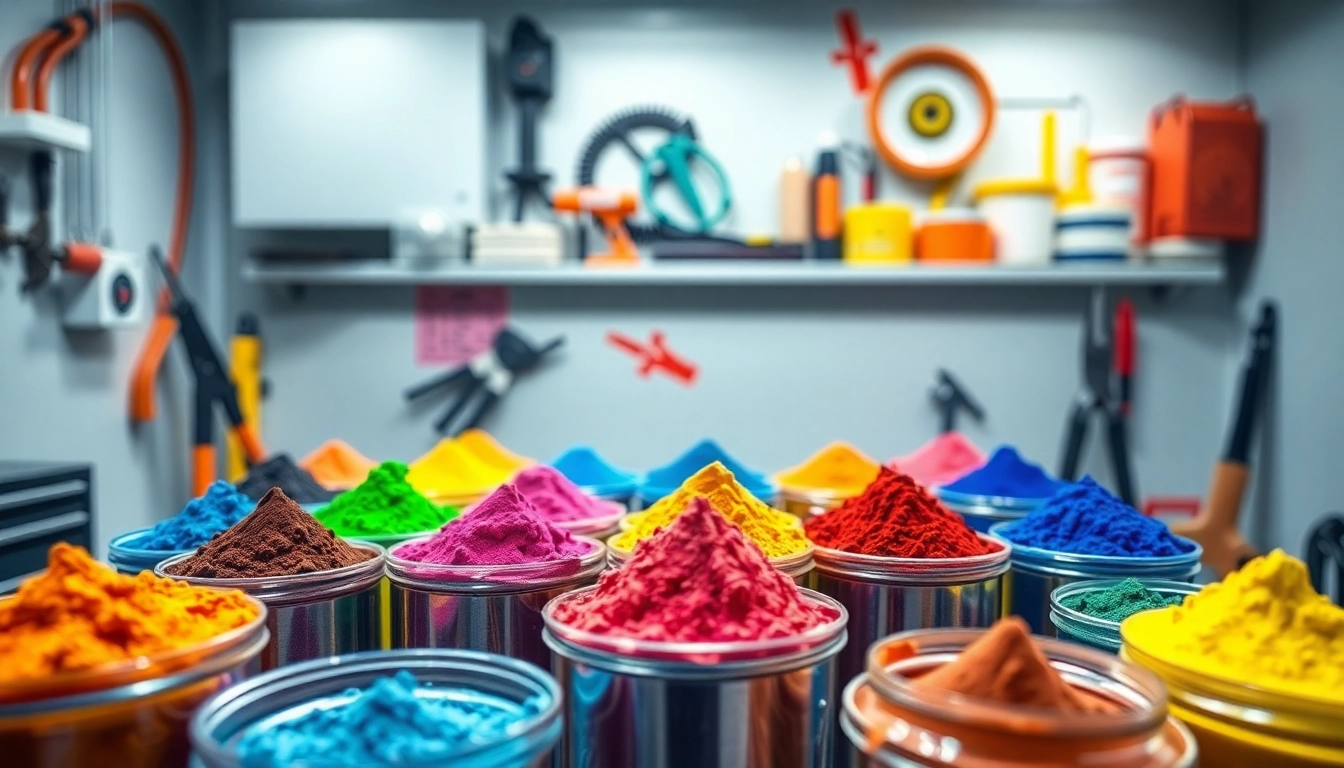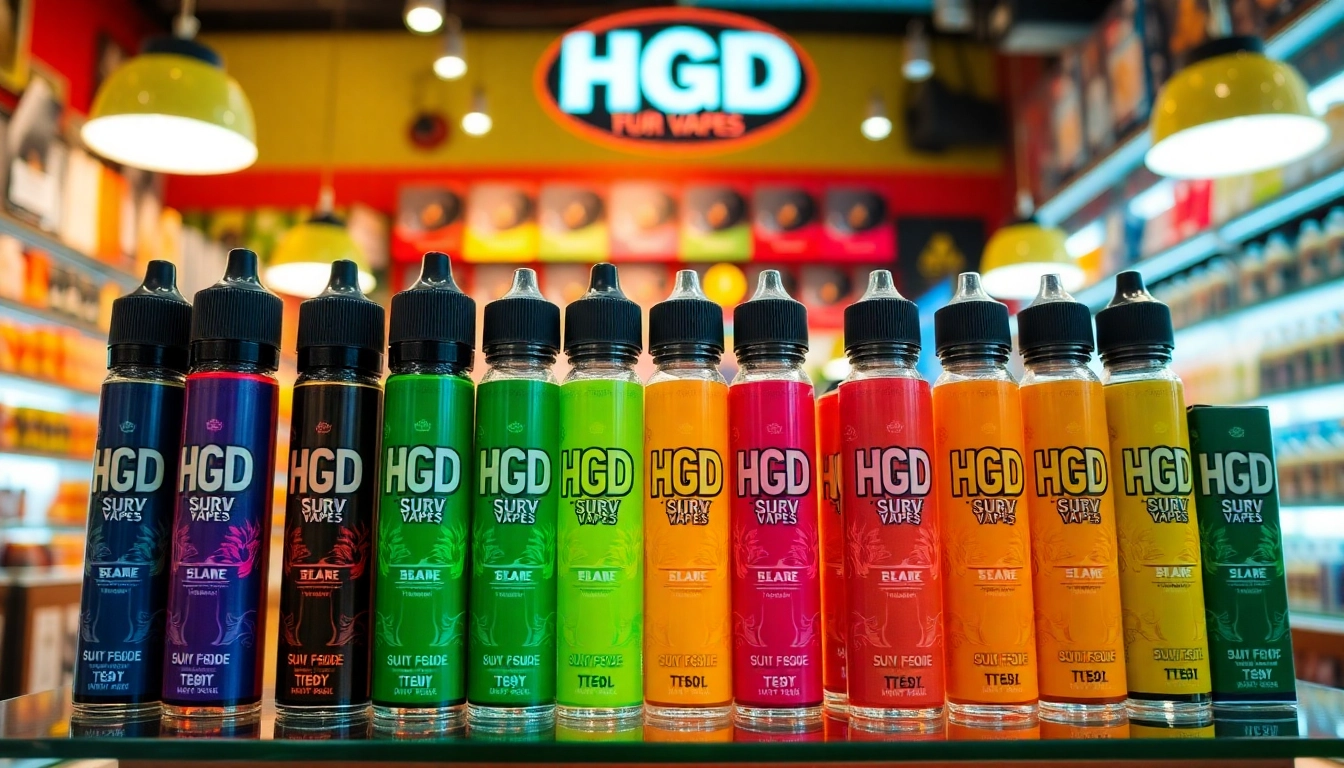Understanding Powder Coating: An Overview
In an age where durability and aesthetics play pivotal roles in manufacturing and renovations, powder coating has emerged as a leading method for finishing metal surfaces. This dry finishing process not only enhances the longevity of products but also offers a plethora of color and texture options that elevate their visual appeal. This comprehensive guide explores every facet of powder coating—from its definition and history to its application across various industries. As we dive deeper into this subject, you will discover insights that showcase why powder coating has become a preferred choice for many manufacturers and consumers alike.
What is Powder Coating?
Powder coating is a method of applying a protective and decorative finish to materials—primarily metals—using a dry powder. Unlike traditional liquid paints that require solvents to keep the binder and filler parts in a liquid suspension, powder coatings involve a free-flowing, dry powder that can be applied electrostatically.”
The process begins when powdered paint is charged with electricity and sprayed onto an object to create an even coating. Once the powder has been applied, the item is placed in a curing oven where it is heated to approximately 350°F (177°C). This heat causes the powder to melt, flow, and chemically bond to the surface, forming a hard, durable finish that can withstand various environmental factors.
History and Evolution of Powder Coating
The origins of powder coating can be traced back to the 1950s when it was first developed as a method for applying a more durable surface finish. As the industry evolved, so did the formulation of powder coatings, with advancements in polymer technology leading to more versatile and high-performing coatings. Initially, it was employed primarily in industrial applications due to its robustness. Over the last few decades, however, its usage has expanded to include a variety of consumer products, such as appliances, automobiles, and furniture. This transition from industrial to consumer markets marked a significant evolution in the materials and techniques used in powder coating, allowing for advancements in color variety, finishes, and application processes.
Applications in Various Industries
Powder coating serves an extensive range of industries, thanks to its durability, versatility, and attractive finishes. Here are some notable applications:
- Automotive Industry: Powder coating is widely used for applying finishes to automotive parts, including wheels, frames, and other components, due to its resistance to chips, scratches, and corrosion.
- Appliances: Many household appliances, like refrigerators and washing machines, utilize powder coating for their exterior finishes, providing a hard surface that resists chipping and deterioration.
- Architecture: Building materials, such as window frames, railings, and facades, are often powder coated to provide extra protection against weather elements while maintaining a polished aesthetic.
- Furniture: Many metal furniture items benefit from powder coating, which not only enhances appearance but also ensures a robust and lasting finish.
Benefits of Powder Coating Over Traditional Painting
When comparing powder coating to traditional liquid painting methods, the advantages become abundantly clear. Below are some notable benefits of powder coatings:
Durability and Longevity
One of the most significant benefits of powder coating is its superior durability. Powder coatings are known to be more resilient compared to conventional paint finishes. This durability stems from the bonding process of the powder during curing, creating a finish that is tough, impact-resistant, and less prone to scratching or chipping.
Additionally, powder coating stands better against environmental factors: UV rays, moisture, and chemicals. Unlike traditional paint that may fade or peel over time, powder-coated surfaces maintain their appearance over longer periods, making them an ideal choice for outdoor applications.
Environmental Benefits
Powder coating is an environmentally friendly option compared to traditional liquid paint. The powder does not contain solvents, resulting in negligible volatile organic compounds (VOCs), which can be harmful to both individuals and the environment. This offers a significant advantage in industrial settings where compliance with regulations regarding emissions is critical.
The use of powder coatings also drastically reduces waste, as any overspray can often be reclaimed and reused, optimizing materials and minimizing environmental impact.
Cost-Effectiveness of Powder Coating
While the initial costs of equipment for powder coating processes might be higher than those for traditional painting setups, the long-term economic benefits often outweigh these expenditures. The increased durability means less frequent reapplication or repair, saving time and materials. Moreover, the efficiency of reclaiming overspray contributes to maximizing the use of powder and reducing waste.
Furthermore, the speed of the curing process allows for quicker turnaround times in manufacturing settings, contributing to greater overall efficiency and productivity.
Types of Powder Coatings Available
In the world of powder coating, a variety of formulations are available, each offering unique properties and applications. Understanding the differences and uses of these various types can aid decision-making when selecting the best coating for a specific application.
Thermoset vs. Thermoplastic Powders
Powder coatings can be generally categorized into either thermoset or thermoplastic types:
- Thermoset Powders: These powders undergo a chemical change during the curing process. This change is irreversible, leading to a hardened surface that is highly durable and resistant to heat and chemicals. Common examples include epoxy and polyester powders, which are frequently used in automotive and industrial applications.
- Thermoplastic Powders: Unlike thermoset powders, thermoplastic powders do not undergo a chemical change. When heated, they become soft and pliable and can be reshaped. Upon cooling, they harden without losing the ability to be reheated. This flexibility makes thermoplastics ideal for uses requiring impact resistance and flexibility, like in the manufacturing of consumer goods.
Specialty Coatings: Effects and Finishes
Specialty powder coatings provide unique finishes and visual effects that can set products apart in the marketplace. Here are some noteworthy categories:
- Textured Finishes: These coatings provide increased grip and aesthetic appeal, often used in hand-held equipment or machinery.
- Metallic Finishes: Often used in decorative applications, metallic coatings can provide a shiny, lustrous finish that mimics traditional metallic paints yet offers better durability.
- Wrinkle Finishes: This effect gives a crinkled appearance, commonly used on automotive parts and outdoor furniture.
Color Choices and Customization Options
One of the most compelling features of powder coating is the extensive color palette available. From standard colors to custom blends, powder coating can be tailored to meet specific branding requirements. Many manufacturers also offer the ability to match RAL colors, providing precise color matching abilities for commercial clients.
Furthermore, advancements in powder formulation have led other effects such as chameleon colors and matte finishes, providing endless possibilities for personalization and branding.
The Powder Coating Process: Step by Step
The process of powder coating involves several critical steps that ensure quality and adherence to standards. Understanding these steps can help in troubleshooting or optimizing the process for end-users.
Preparation and Cleaning of Surfaces
Before application, it is vital to adequately prepare the surface to achieve a durable bond. This step typically involves:
- Cleaning: Surfaces must be cleaned of dirt, grease, and old paint. Methods such as sandblasting, acid baths, or solvent cleaning are often employed.
- Surface Profiling: Creating a surface profile can enhance adhesion. This is typically achieved through mechanical means, such as blasting or abrasive cleaning, which helps the powder to better adhere.
- Pre-Treatment: Depending on the material, a pre-treatment step may be necessary. This could include phosphating, which improves corrosion resistance and provides a better surface for the powder to adhere.
Application Techniques
The application of powder is a technical process that involves using a spray gun to create an electrostatic charge on the powder particles. This charge causes the particles to adhere to the grounded surface of the object being coated. The two main techniques include:
- Electrostatic Spray: This is the most common method, using an electrostatic gun to spray charged powder onto the grounded surface. The attraction allows for an even and consistent application.
- Fluidized Bed Coating: In this process, the object is heated, and it is passed through a bed of fluidized powder. The heat melts the powder upon contact, forming a smooth coating.
Curing and Finishing Touches
After application, the item must undergo a curing process in an oven, where the powder melts, flows, and chemically reacts to form a hard and durable finish. The curing time and temperature depend on the specific type of powder used, but typically it ranges from 10-20 minutes at temperatures around 350-400°F (177-204°C).
Once cured, items are cooled and may undergo additional finishing steps, such as touch-ups or final inspections, before being packaged and shipped to customers or returned to service.
Troubleshooting Common Powder Coating Issues
Despite its numerous advantages, the powder coating process may encounter issues that can affect the quality of the finish. Below are some common problems and their solutions.
Identifying Defects in Coating
Common defects include:
- Orange Peel Effect: Occurs when the surface appears bumpy. This may be due to improper spray distance or insufficient curing time.
- Color Mismatches: Can arise from improper color mixing or insufficient pre-treatment processes. Ensuring proper surface preparation is crucial.
- Chipping or Scratching: Often a result of inadequate curing or surface preparation. Always ensure the correct temperature and times are observed.
Tips for Achieving a Consistent Finish
To enhance the finishing process, consider:
- Maintaining consistent application techniques to ensure even coverage.
- Regularly cleaning the spray booth and equipment to prevent contamination.
- Monitoring the environment, as humidity and temperature can influence curing and adhesion.
Maintaining Equipment for Optimal Performance
Routine maintenance is critical to achieving high-quality powder coating results. Certain practices include:
- Regularly checking and calibrating spray equipment for optimal performance.
- Cleaning out hoses and valves to prevent powder buildup.
- Inspecting curing ovens for even heating to avoid inconsistencies in the coating.



